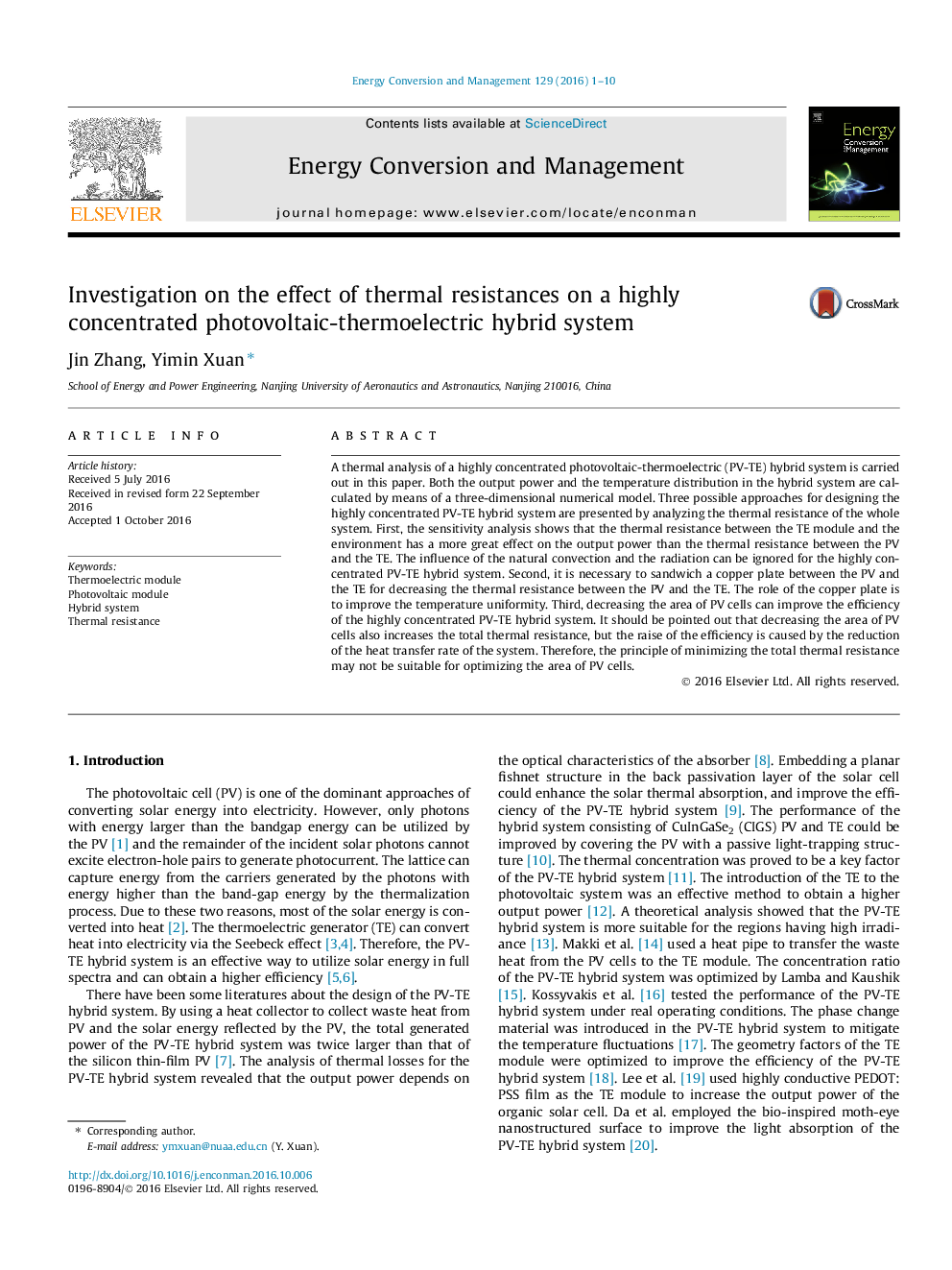| Article ID | Journal | Published Year | Pages | File Type |
|---|---|---|---|---|
| 5013309 | Energy Conversion and Management | 2016 | 10 Pages |
Abstract
A thermal analysis of a highly concentrated photovoltaic-thermoelectric (PV-TE) hybrid system is carried out in this paper. Both the output power and the temperature distribution in the hybrid system are calculated by means of a three-dimensional numerical model. Three possible approaches for designing the highly concentrated PV-TE hybrid system are presented by analyzing the thermal resistance of the whole system. First, the sensitivity analysis shows that the thermal resistance between the TE module and the environment has a more great effect on the output power than the thermal resistance between the PV and the TE. The influence of the natural convection and the radiation can be ignored for the highly concentrated PV-TE hybrid system. Second, it is necessary to sandwich a copper plate between the PV and the TE for decreasing the thermal resistance between the PV and the TE. The role of the copper plate is to improve the temperature uniformity. Third, decreasing the area of PV cells can improve the efficiency of the highly concentrated PV-TE hybrid system. It should be pointed out that decreasing the area of PV cells also increases the total thermal resistance, but the raise of the efficiency is caused by the reduction of the heat transfer rate of the system. Therefore, the principle of minimizing the total thermal resistance may not be suitable for optimizing the area of PV cells.
Related Topics
Physical Sciences and Engineering
Energy
Energy (General)
Authors
Jin Zhang, Yimin Xuan,
